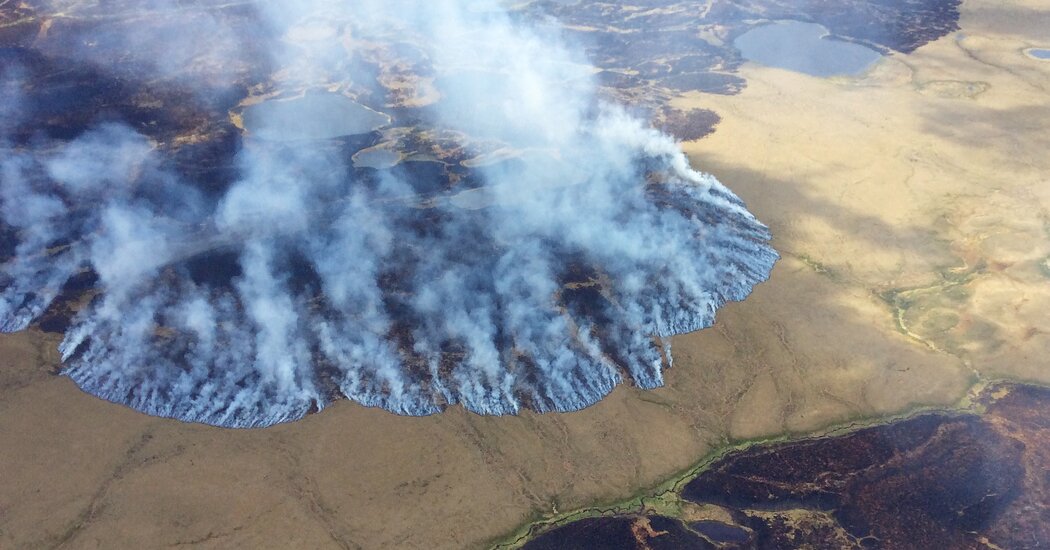
Those factors interconnect: High temperatures lead to longer fire seasons and larger burn areas as well as drier soils that are friendly to fire. And because the fires occur in peat and peat-like soils high in carbon content, their burning can emit disproportionately large amounts of carbon dioxide and methane that contribute to global warming.
In Alaska, Dr. Veraverbeke noted, only 10 percent of carbon emissions from fires comes from trees; 90 percent comes from burning soil. The research found that carbon emissions from overwintering fires currently contribute 0.5 percent of the total carbon emissions from fires in Alaska and the Northwest Territories, yet “this fraction may grow larger with climate warming,” the authors wrote.
With the likeliest places where overwintering fires might occur outlined in the paper, the authors suggest, it could be possible for firefighters to focus on anticipating where re-emerging may occur and be ready to suppress them, saving firefighting resources and reducing emissions.
While the fires are not a strong influence from season to season currently, “that could happen,” said Dr. Turetsky. The worry is that “they will actually be a force shaping subsequent fire seasons,” she said.
J. Michael Waddington, Canada research chair at McMaster University in ecohydrology, the study of how water interacts with an environment, called the new research, which he did not participate in, “very elegant and excellent.” Dr. Waddington said that fires that burn deeper into the soil will become more common as the Earth warms. Because the new study shows the conditions that promote zombie fires, he said, “it does give fire suppression, fire managers, a little head start to anticipate whether the next year is going to be a problem.”
“Zombie” fires is the kind of phrase that some scientists disparage as sensationalistic, but the idea of a seemingly dead thing sputtering back to life is a powerful image that captures the imagination Dr. Veraverbeke acknowledged. “That’s part of our job, right? To communicate science.” Besides, he said, “It’s a great analogy.”
Dr. Turetsky suggested a different metaphor for the fires: ghosts. “It’s the past coming back to haunt the future,” she said.
Average Rating